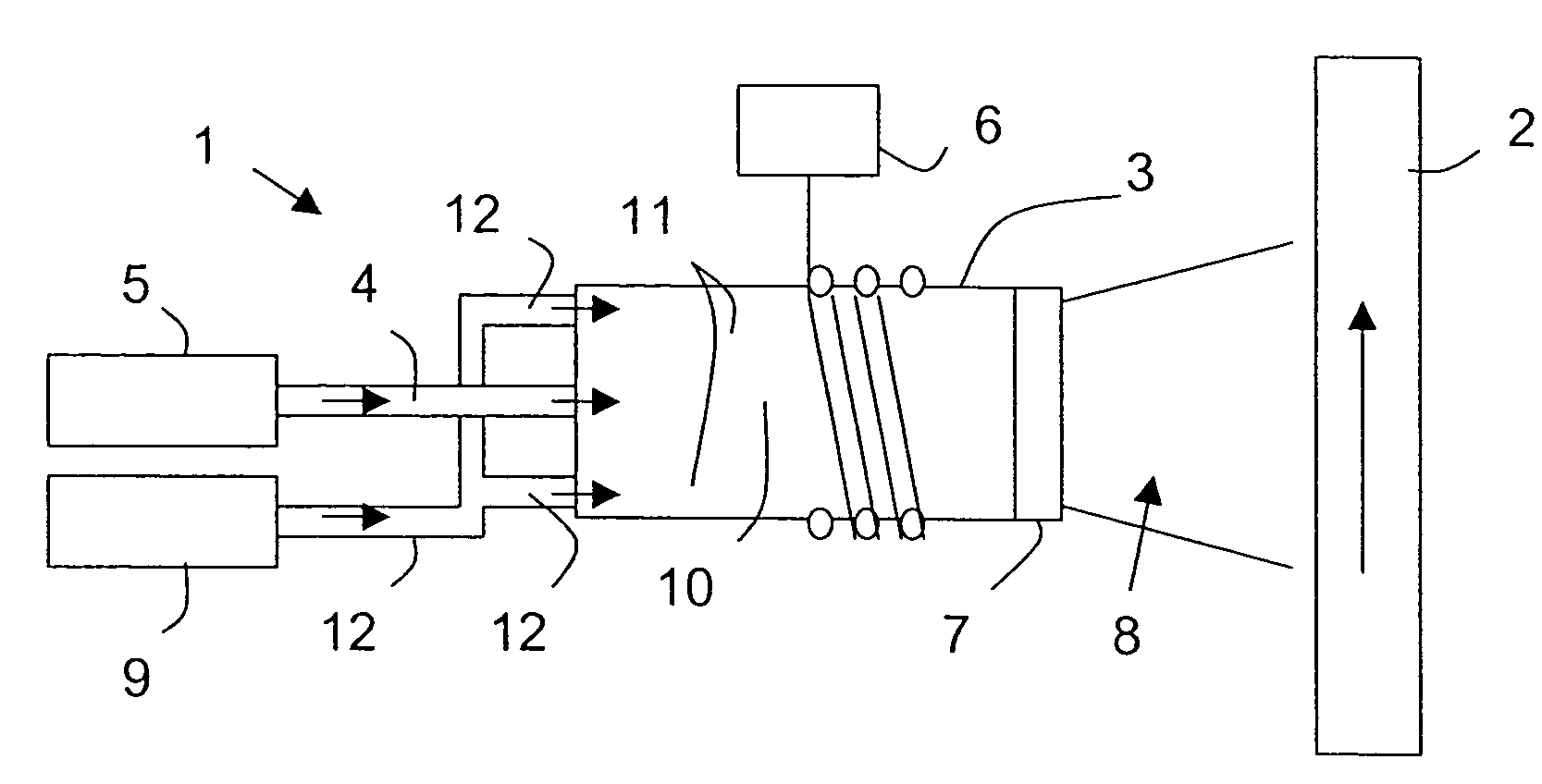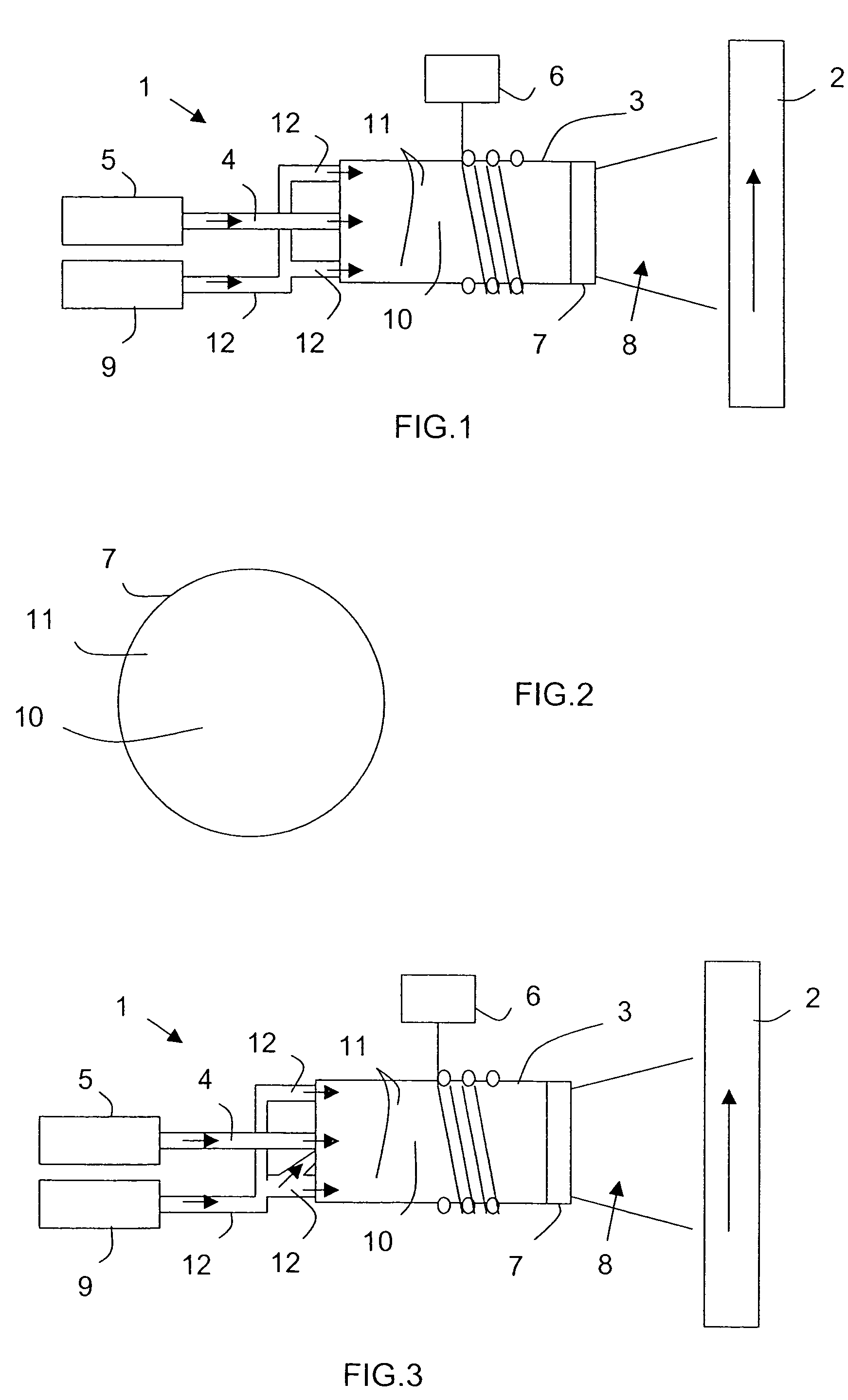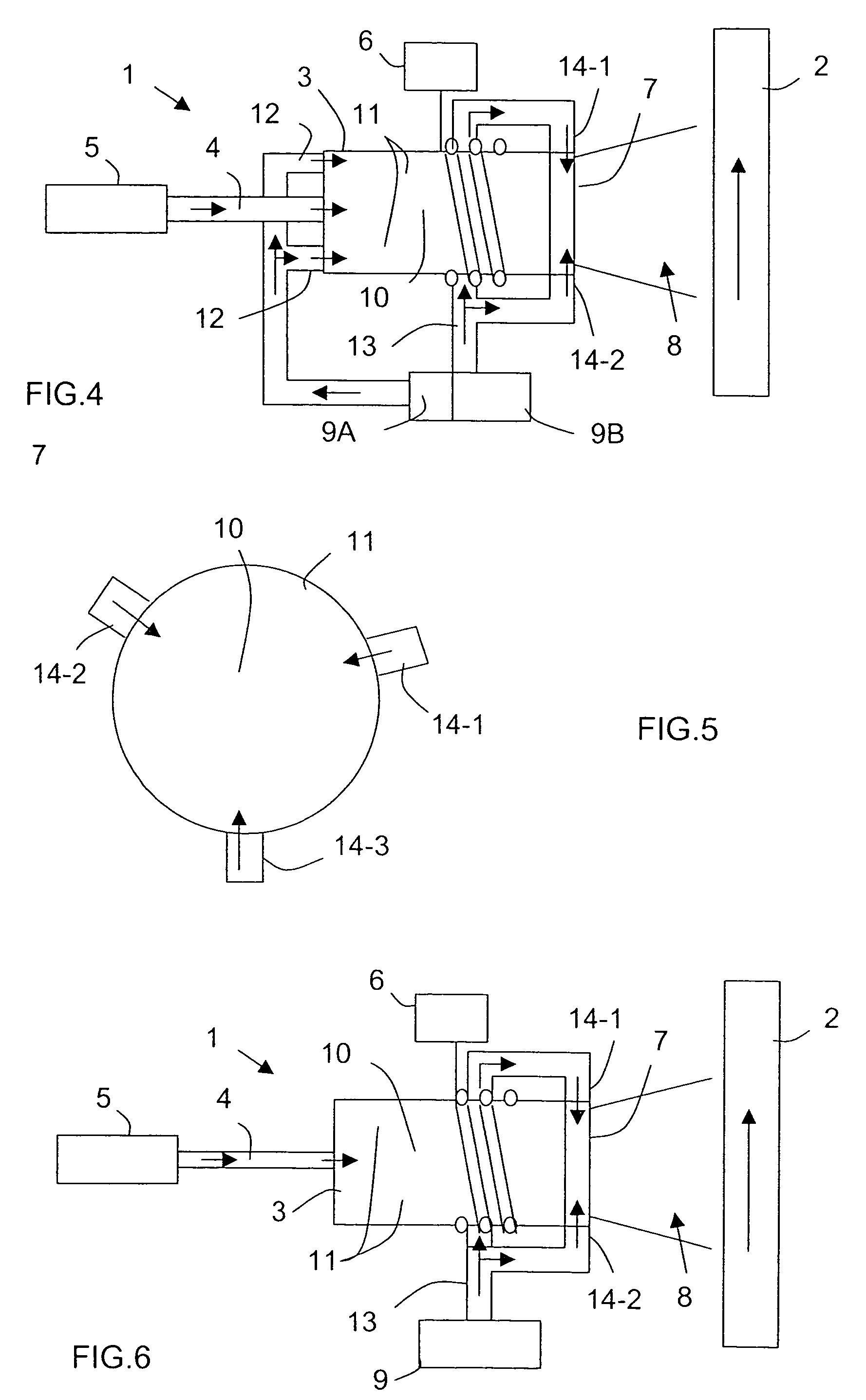Method for building up plasma on an optical fiber preform, while reducing nitrogen oxides
- Summary
- Abstract
- Description
- Claims
- Application Information
AI Technical Summary
Benefits of technology
Problems solved by technology
Method used
Image
Examples
first embodiment
[0030]Reference is made initially to FIGS. 1 and 2 to describe apparatus of the invention.
[0031]The plasma buildup apparatus 1 comprises a plasma torch 3 coupled by a pipe 4 to a feed module 5 for feeding a plasma-generating gas such as oxygen, nitrogen, or argon, or a combination of two of them, and surrounded by a coil fed with high frequency current by a generator 6.
[0032]Usually, the plasma-generating gas injected into the plasma torch 3 is a mixture of nitrogen and oxygen. In addition, although not always shown in the figures, a fraction of the plasma-generating gas is generally introduced into a central portion 10 of the plasma torch, while the remainder is introduced at a different rate into the periphery 11 around the central portion 10. It is important to observe that there is no partition separating the central and peripheral portions 10 and 11.
[0033]A plasma of ionized gas at high temperature is generated inside the plasma torch 3 and is delivered at the end of an outlet ...
second embodiment
[0041]Reference is now made to FIG. 3 to describe apparatus of the invention. This embodiment constitutes a variant of the apparatus described above described with reference to FIGS. 1 and 2.
[0042]In this example, the feed module 9 feeds one or more reducing elements, preferably accompanied by air, via pipes 12, not only to the peripheral zone 11, but also to the central zone 10. In a variant that is not shown, it is also possible to envisage the feed module 9 comprising two independent subportions respectively feeding the central and peripheral zones 10 and 11 of the plasma torch 3 with different reducing elements (preferably accompanied by air).
third embodiment
[0043]Reference is now made to FIGS. 4 and 5 while describing apparatus of the invention. This apparatus constitutes a second variant of the apparatus described above with reference to FIGS. 1 and 2.
[0044]In this example, the feed module 9 is subdivided into at least two submodules 9A and 9B which feed preferably different reducing elements not only to the upstream portion of the plasma torch 3 via pipes 12, but also to the downstream portion of the torch at the end of its outlet nozzle 7 via pipes 13. The end of the outlet nozzle 7 has at least one inlet 14 connected to a pipe 13 and arranged to deliver one or more reducing elements to the outlet of the plasma torch 7 at at least one location. For example, the upstream portion of the plasma torch 3 is fed with air and hydrogen by the feed submodule 9A via the pipe 12, while the inlets 14 of the outlet nozzle 7 are fed with ammonia (NH3) by the feed submodule 9B via the pipes 13.
[0045]As shown in FIG. 5, three inlets 14-1 to 14-3 ar...
PUM
 Login to View More
Login to View More Abstract
Description
Claims
Application Information
 Login to View More
Login to View More - R&D
- Intellectual Property
- Life Sciences
- Materials
- Tech Scout
- Unparalleled Data Quality
- Higher Quality Content
- 60% Fewer Hallucinations
Browse by: Latest US Patents, China's latest patents, Technical Efficacy Thesaurus, Application Domain, Technology Topic, Popular Technical Reports.
© 2025 PatSnap. All rights reserved.Legal|Privacy policy|Modern Slavery Act Transparency Statement|Sitemap|About US| Contact US: help@patsnap.com



